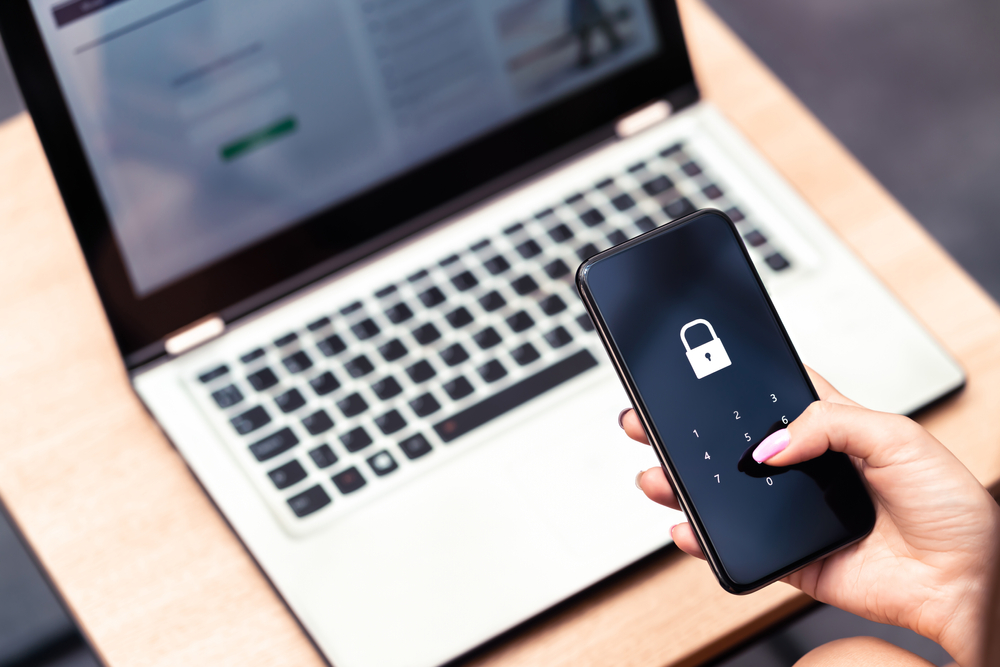In the modern age, a cell phone is no longer a luxury — it’s an absolute necessity. From online banking to text messaging, email to social media, your cell phone is your window to the world. You have to secure your cell phone to protect your sensitive information.
That cell phone is also a tiny supercomputer, and it deserves the same protection as any other computer. If you want to stay safe in the 21st century, secure your cell phone with these tips to make that happen.
Start with Physical Security
It’s easy to forget about physical security, but that’s always the place to start. Knowing where your cell phone is at all times and keeping it physically secure is a vital part of cyber security and something you should never ignore.
Many of the most successful hacks require physical access to your device, and you can deny the hackers what they want by keeping your cell phone secure at all times. It only takes a minute to pull your cell phone off the table and put it back in your pocket — where it will be infinitely safer from prying eyes and grasping hands.
Secure Your Cell Phone With a Solid Passcode
A solid passcode is the starting point for smart cell phone security, so make sure you have a code that is easy to remember but difficult to guess. When setting up your passcode, you should avoid things like birth dates, addresses, and anything else that others would know or be able to find out.
You can go a step further by enabling biometric security, but this should be an adjunct to a good passcode and not a substitute for it. While fingerprints and face scans seem safer, they too can be vulnerable, and that makes a solid passcode more critical, not less.
Watch Out for Suspicious Text Messages
As mobile devices have become ubiquitous, hackers have moved on to sending text messages, so scan your inbox frequently and delete any that seem suspicious.
Even if you think a text message is legitimate, avoid clicking on any embedded links. Those links can contain key loggers and other malware, so contact the supposed sender directly to verify the legitimacy of the text.
Optimize App Security
The typical cell phone can be home to dozens of different apps, each with its own security profile and potential vulnerabilities. If you want to use those apps safely, take the time to optimize their security.
Checking the permissions on the apps you use most and giving them the least possible access is a good rule of thumb. Unless you need to turn it on, enabling location tracking and other intrusive services could put you at risk, so tread carefully and always put your safety first.
Scan Your Phone for Malicious or Unsafe Apps
With so many apps to keep track of, it is a good idea to scan your phone frequently for malicious content and other safety issues. You may not always know when a particular app has been compromised, so running periodic scans is the best way to uncover looming problems.
While you are at it, be sure to run a full malware scan on your phone. It only takes a small amount of time, and it could save you a lot of time, trouble, and money.
Watch Out for SIM Swapping
There is an emerging threat out there, one that aims to defeat two-factor authentication and other modern security measures. That threat is SIM swapping, a unique cybercrime in which a hacker takes control of your cell phone number.
If you can catch SIM swapping early on, you may be able to mitigate the damage and recover your phone number quickly. Suspect SIM swapping if you are suddenly unable to make or receive phone calls or if you are no longer receiving any text messages. If you do suspect SIM swapping, contact your cell phone carrier right away, as time is definitely of the essence.
You likely use your cell phone for many different things, from sending money to your friends to hailing a ride home after a night of partying. That cell phone in your pocket is certainly convenient — now it’s time to make it safer. The tips listed above can help you secure your cell phone from both known and emerging threats, giving you one less thing to worry about.

